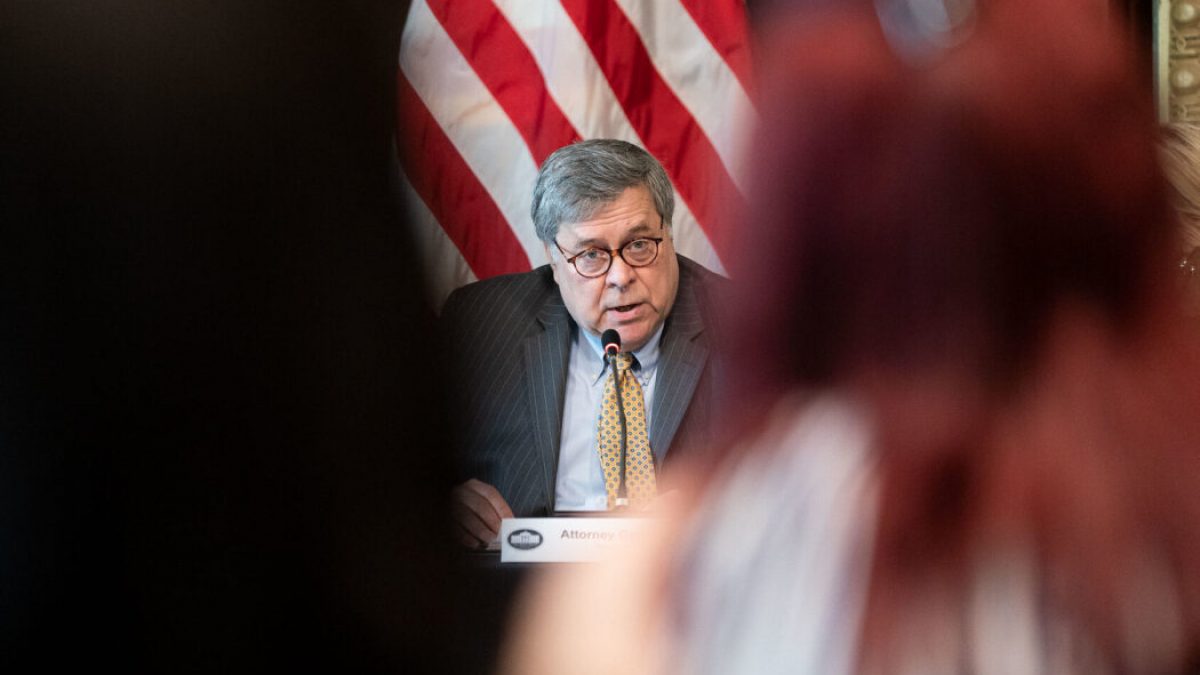The DOJ decided not to prosecute Trump. It’s hiding the reason why.

The Department of Justice has confirmed the existence of a memo laying out its rationale for not bringing charges against President Trump, but it refuses to make its reasoning public. In response to ongoing litigation involving a Freedom of Information Act request by Citizens for Responsibility and Ethics in Washington, DOJ turned over a heavily redacted version of one of the most important legal documents the American people have never seen: the official grounds for not charging Trump with obstruction of justice.
The Mueller report catalogued numerous instances in which President Trump may have obstructed the Russia investigation, including by asking associates to curtail it or to fire the special counsel. The memo obtained by CREW explains the legal reasoning behind Attorney General Barr’s suspect claim that “the evidence developed during the Special Counsel’s [Robert Mueller’s] investigation is not sufficient to establish that the president committed an obstruction-of-justice offense.” The memorandum is also presumably the supposed vindication of President Trump’s claim, after Barr’s announcement, that there was “No Collusion, No Obstruction, Complete and Total EXONERATION.”
And yet its contents remain a secret. DOJ produced redacted copies of the first and last pages of the nine-page document and withheld the other seven. If Barr and Trump are so confident in the rationale used for clearing the president, why did DOJ go to considerable lengths to conceal the existence of this memorandum and why is it continuing to hide the legal basis for the president’s supposed exoneration from the American people?
One possible answer is that the memorandum would not withstand scrutiny from legal experts, including those who worked on the Special Counsel investigation. After Barr released his letter to Congress summarizing the Mueller report, the Special Counsel communicated to Barr his concern that Barr’s letter “did not fully capture the context, nature, and substance of [the Office of the Special Counsel’s] work and conclusions.” And when Mueller’s report was finally released, CREW’s Noah Bookbinder wrote that “[f]ar from the ‘total and complete exoneration’ that President Trump prematurely claimed when Attorney General William Barr released his four-page summary of Mr. Mueller’s work, the special counsel’s report, over the course of 400-plus pages, lays out a compelling case — even absent a prosecutive conclusion — of obstruction of justice by the president.” Within weeks of the release of the report, more than a thousand former federal prosecutors signed a statement concluding that, contrary to Barr’s decision, “the conduct of President Trump described in Special Counsel Robert Mueller’s report would, in the case of any other person not covered by the Office of Legal Counsel policy against indicting a sitting President, result in multiple felony charges for obstruction of justice.”
Another possibility is that the memorandum contributes to a body of evidence suggesting that Barr was hand-picked by Trump to discredit and undermine the eventual findings of the Special Counsel—especially with respect to the obstruction case against the president. In the summer preceding Barr’s nomination to run DOJ, Barr penned a lengthy memorandum asserting that Mueller’s theory of obstruction of justice was “fatally misconceived.” Barr sent this letter to a number of individuals, including attorneys for the president, Deputy Attorney General Rod Rosenstein, and Assistant Attorney General for the Office of Legal Counsel Stephen Engel. The secret March 24, 2019 memorandum recommending Trump not be charged was authored in part by Engel and approved by Rosenstein.
Other documents recently obtained by CREW raise additional questions about Attorney General Barr and DOJ’s handling of the obstruction case against the president. Documents show, for instance, that Engel edited Barr’s prepared testimony for his confirmation hearing in the Senate Judiciary Committee as well as a letter to Chairman Lindsey Graham in which Barr confirmed that he had shared the memorandum and discussed his views on obstruction with multiple DOJ and White House officials as well as personal counsel to the president.
Those documents also reveal the extent to which Rosenstein, Engel and one of Rosenstein’s deputies—Edward O’Callaghan—coordinated Barr’s unveiling of the Special Counsel’s report. Internal DOJ emails suggest that Barr’s team may have been preparing to absolve the president regardless of what the Mueller report said. In an April 7 email, Engel makes reference to an “action memo,” another undisclosed document that may have been the group’s playbook for clearing the president or obfuscating the damning evidence of obstruction compiled by the Special Counsel.
The centrality of Engel and OLC’s involvement in the effort to exonerate the president is yet another example of the office, under current political leadership, serving as an extension of the White House Counsel’s office rather than an independent office. Engel’s involvement also undermines one of the central reasons for appointing a Special Counsel in the first place: the need to ensure that DOJ’s conclusions regarding President Trump’s potential criminal culpability were not unduly influenced by his own political appointees.
DOJ’s production is the result of ongoing litigation by CREW to obtain a full response to a Freedom of Information Act request for the documents OLC provided Barr about whether Special Counsel Robert Mueller’s evidence was sufficient to establish that the president obstructed justice. The documents obtained so far answer some questions, but they raise countless more about how DOJ handled potentially illegal actions by the President.
-
Responsive documents